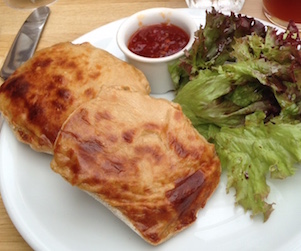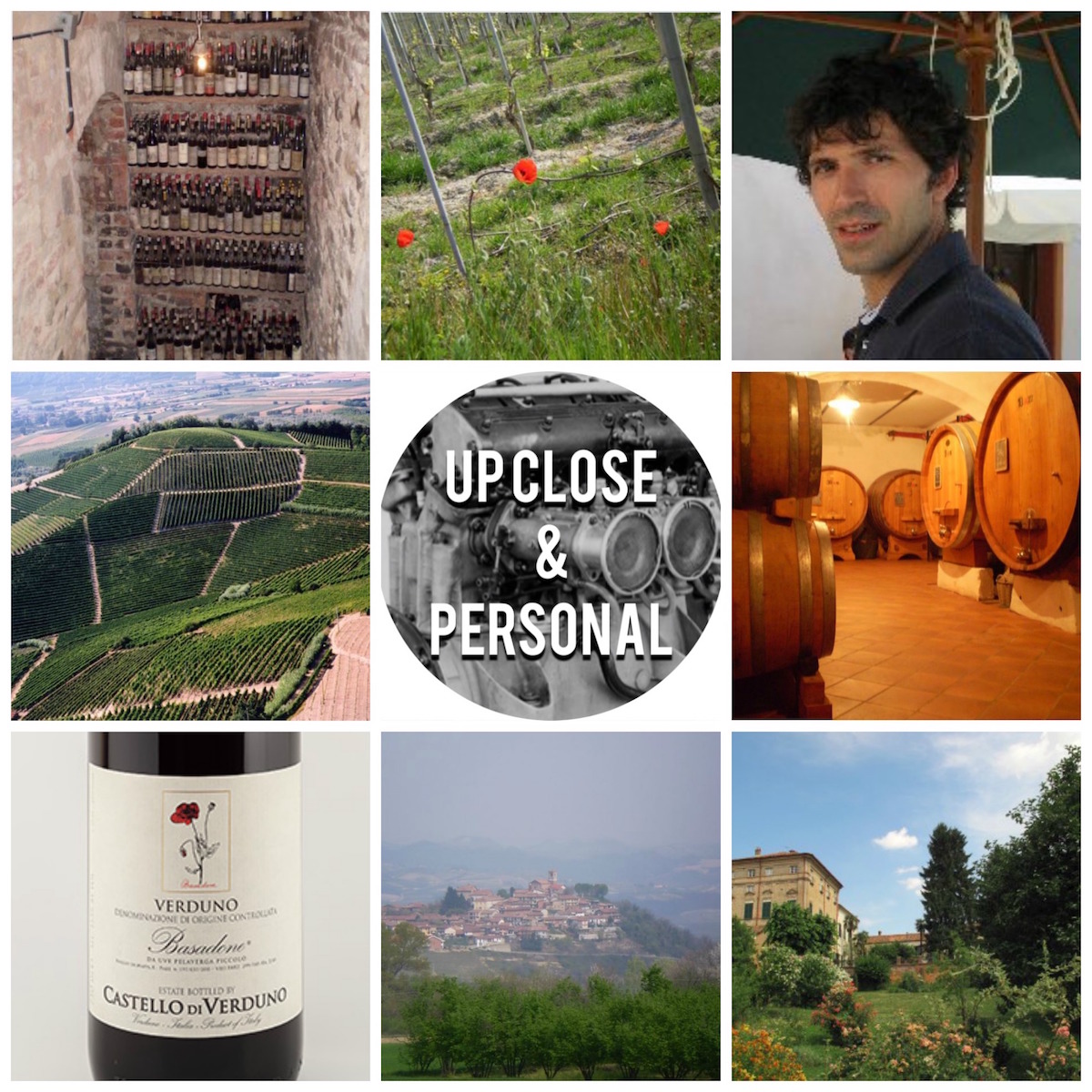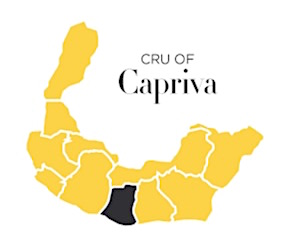by Andy Shay

Last summer I was invited on a ski trip with my running buddy and eight other dads over a certain age. At the time February seemed far off, but as the date drew near, it became painfully obvious that we would be leaving our wives alone on Valentine’s day and leaving them alone with the kids the following day on Family day. But reservations were already made and the attraction of terrific skiing and the charms of the Charlevoix were too great to cancel.
I don’t do a lot of skiing, but my friend (who is also my wild mushroom and impossibly-yellow-yolked Grey County egg dealer) assured me that Le Massif was great skiing and the food was super too. I was also interested because Le Massif is in the heart of a cheese triangle formed by Maurice Dufour, Laiterie Charlevoix and La Societe Cooperative Ile-aux-Grues. Additionally, I ran across a great charcuterie manufacturer based in Baie St Paul. Production is taken so seriously there that the Charlevoix is also home to Canada’s first government controlled European style quality designation. How could I resist?
After fifteen years in the fine food business, one thing I have learned is that being on the ground is worth at least 10,000 words. You can read, research, talk to the subjects and producers and know a lot about the subject, but it is not until you go there and are on the ground and suddenly understand all the things that you had not even considered. Only on site will the true picture – the lay of the land – instantly crystallize and become incredibly clear. What I found was a region that seems to be in tune with itself that makes great, unique products, and knows what it does well. They also know how to promote their authentic quality, creating a pride for the residents and creating a market for their own local products. Perhaps it is a crucible for true Canadian terroir and a model for other regions.
The region is about an hour east of Quebec City and the route follows the St Lawrence river from the flat lands around the city and gradually rises into the rolling and steep hills of the Charlevoix. (Click here for a map)
On the map, Le Massif is the thing that looks like a spider web just below Petite-Riviere-Saint-Francois. Unlike any ski resorts that I have been to, Le Massif is most easily accessed by driving into the top of the hill. As soon as your skis are on you advance to the edge of the precipice that falls away to the St Lawrence river. As you descend the well groomed hills, massive chunks of ice ebb and flow with the tide, the clouds roll in and out and colourful freighters float slowly by. The trails twist and wind down the mountain affording views up and down the river. The Ile-aux-Grues seems just a stone’s throw away. As an advanced beginner, I did not try them out, but my friends reported that there were terrific mogul trails and they had a lot of fun glade skiing through the young forests of the hill. We were skiing during the week, but the slopes were not busy and I often enjoyed the entire run to myself. Inside there were no hotdogs and hamburgers in sight – but ‘curried turkey with raisins’, Pissaladiere, Wild Boar, local cheese plates and pate de campagne avec cornichons. Now that is the way to heat yourself up after a morning on the slopes!
Le Massif was bought by Daniel Gaultier, one of the founders of Cirque de Soeil, several years ago and there are big plans afoot for measured development – but none are visible yet and there are no accommodations at the resort. There are, however, several auberges in and around Baie St. Paul, a small town, about 15 minutes to the East. We stayed at the La Grande Maison in the centre of town. The building was a large house and has since had two annexes added that include additional rooms and a spa. The rooms were not fancy, but very nice. The bedspreads and curtains were hand sewn, tvs were hiding under hand crocheted doilies and the towels were arranged artfully in different patterns on the bed each day. All pointing to the hands-on care and sensibilities of the owners.

Dinner at the hotel was served in the Marion Grill, a room that all literature I read described as theatrical. There was a fireplace in the centre and walls were draped with flowing textiles – it was certainly creative and felt very warm. The service was outstanding, very attentive, had great suggestions and knew the menu well. In fact on our third evening our waiter was scheduled off but he came back to the auberge as we gathered for dinner just to bid us farewell. The food was all local and very good: salmon sashimi and smoked salmon drizzled with ginger oil, fresh, clean and faintly Asian, Charlevoix lamb terrine au gratin, Charlevoix trout with Brussels sprout butter and lobster tail with muscat sauce served on linguini – incredibly flavourful. For dessert: maple and apple tart served in an incredibly delicate pastry.
The price of the rooms included our lift ticket, a $35 voucher for the dining room at dinner, breakfast and when we stayed for two nights we received the third night free. Altogether, excellent value and an authentic experience. Give me these quirks , charm and care any day over the staged and scripted experience of a modern planned ski village!
The town of Baie St Paul (population 7,288) is located in a river valley and indeed does have a bay, but the town is separated from it by a wide swath of marshy area. Typically, there is an enormous church with silver spires in the town centre and quite large convent and girls school. The narrow main street is lined with ancient houses with steep pitched roves pierced by tiny windows. Most of these houses have been converted to art galleries. The weekend we visited was an Olympic weekend and we left the Auberge in search of a bar with a large screen TV to view the events. One pub closed at 4PM, another was changing ownership. A third seemed nonexistent so we stopped for alternate suggestions at gas station. We walked further on and the snow was gently falling. We arrived at the address of what looked like a darkened house, but there was someone inside. One Friend, who was the French communicator, suddenly backed out of the main floor and stuffed his recently purchased Saucisson hurriedly at me as a chest high dog closed in on us quickly. The main floor was clearly under construction and we were told to go upstairs. At the top of the stairs we were in a room that was lit by only one dim light in the corner. And the lights came on revealing dusty tables and chairs, billiard tables, a full bar, a giant oil canvas of a Quebec winter scene and that large flat screen TV! The owner had opened mid-renovation , just for us and promptly made fresh popcorn. Serendipity and hospitality: the makings of true foodie adventure.
The Charlevoix is a patriotic and fertile region for many food products including, cheese, honey, lamb and charcuterie. Quebec is the first province to have a government controlled quality and origin designation for food like France’s AOC. The designation is controlled by the Conseil des appellations réservées et des termes valorisants (CARTV) and can be awarded for quality, origin or both. Lamb of Charlevoix is the very first product to receive this designation (IGP or Indication géographique protégée). At the moment it is a geographic designation but the hope is that it will become a quality designation as the group becomes stronger. Word has it there is a designation for cheese under consideration.
There is terrific organic charcuterie from Viandes Biologiques Charlevoix. Unfortunately it is provincially, not federally, inspected – so if you would like some, you will have to go to Quebec. They produce terrines, pates, dried sausages, hams, bacon and more. The flavours are full and complex and are not too salty. The store is located on the outskirts of Baie St. Paul.
Just south in the river, and is visible from the slopes, is the Ile-aux-Oies, a member of the Ile-aux-Grues archipelago. The major economic activity on the island is cheese making. In clement weather, the cows of the island graze the fields along the parameter of the island which are marshy with the braquish water of the river. This helps to lend a unique flavour to the milk of the island. Look for these famous Ile-aux-Grue cheeses at your local boutique:
Riopelle – soft ripened, bloomy rind, triple cream named after the painter who lived on the island.
Mi-Carême – a soft ripened, hybrid bloomy/washed rind cheese
Tomme Grosse Ile – semi-soft, washed rind cheese
Ile-aux-Grues – Amazing, all purpose raw milk cheddar.
To the north of Le Massif are two fromagiers who are neighbours on the same road and who have worked closely together for a number of years: Laiterie Charlevoix and La Maison du Affinage Maurice Dufour. The Laiterie Charlevoix story begins in 1948 when Stanislaus Labbe and Elmina Fortin purchased a small dairy. Over the years, the business expanded, adding cheese and territories and finally another generation of Labbes. During the 1970s, when there was great consolidation in the Canadian dairy business, Laiterie Charlevoix stopped bottling milk in order to concentrate on cheese making and dairy distribution. By 1994, Labbe was specializing in regional artisan cheeses and had met Maurice Dufour. The two worked to co-produce Migneron Charlevoix, one of the first of a new wave of artisan cheeses that would wash the province over the next two decades.
In order to promote a sustainable farm model for medium to small farms, Laiterie Charlevoix has created an innovative program with neighbouring farmers. The laiterie buys Canadienne cows (ensuring a steady source of high quality milk) and the farmers are paid to take care of them for the laiterie (ensuring steady income for the farmers). Canadienne cows were developed in Canada after 1608 when the first cows were brought here. This cow was bred as an all-purpose animal (work, meat, milk) and able to endure the tough Canadian environment. The Canadienne produces less milk than a Holstein, but the resulting milk is richer and better suited to cheese making.
Today Laiterie Charlevoix produces cheeses under its own label including:
1608 – an unpasteurized, semi soft cheese with a washed rind
L’Hercule – a semi firm cheese with a nutty flavour and sharp finish
Le Fleurmier and Vieux Charlevoix Cheddar , as well as the fresh cheese Migneron for Maurice Dufour (who ages and finishes the cheese).
There is an outlet store for Laiterie Charlevoix in Baie St. Paul
La Maison du Affinage Maurice Dufour joined with Laiterie Charlevoix in 1995 to create the Migneron cheese. It was named after the wife of the first Dufour to settle in New France.The laiterie creates the cheese and immediately ships it to Maurice Dufour for finishing, aging and distribution. This is the process of affinage. The other cheeses of the company are produced and aged at Dufour’s own facility. The company purchases its cow and sheep milk from local Charlevoix producers and takes pride supporting family farms and the local economy. The firm has won several awards for its cheeses, including the Canadian Cheese Grand Prix, Grand Champion for Migneron in 2002 and category champion at the same competition in 2009 for Ceil de Charlevoix Look for:
Migneron – a cow’s milk, semi-soft washed rind
Ceil de Charlevoix – a blue cow cheese
Persille de Charlevoix – a sharp blue sheep cheese
Le Secret de Maurice – soft ripened, bloomy rind cheese
La Tomme d’Elles – semi-firm, washed rind
Tomme de Brebis de Charlevoix – firm sheep cheese
Find out more about Le Charlevoix at tourisme-charlevoix.com. [See also Zara Fischer-Harrison’s blog tour of Charlevoix artisanal producers here. – Ed]
 Andy Shay is a Toronto-based cheese expert and consultant. Learn about Andy’s tutored tastings at www.andyshay.com
Andy Shay is a Toronto-based cheese expert and consultant. Learn about Andy’s tutored tastings at www.andyshay.com







Thank you for the fine description of the skiing holiday at Le Massif. Also, I particularly enjoyed the story of the cheese production of Charlevoix. Several of the cheeses you mention are available to us in Sudbury and are great favourites, but I will see if we can order some of the others I had not heard of previously.
Thanks Janna: I am glad you enjoyed the article. Each of these cheese is very good – you really cannot go wrong with any one of them! Probably easiest to try through Provincial Fine Foods.